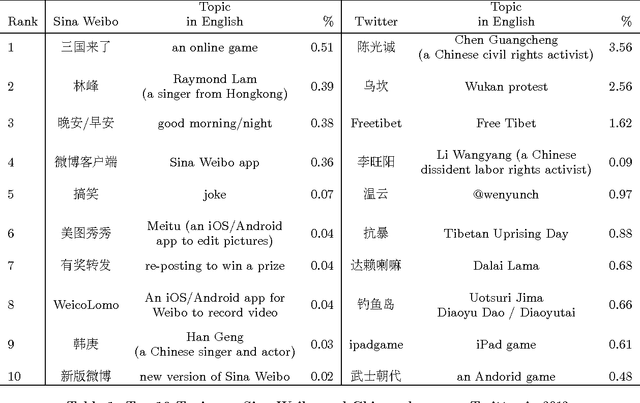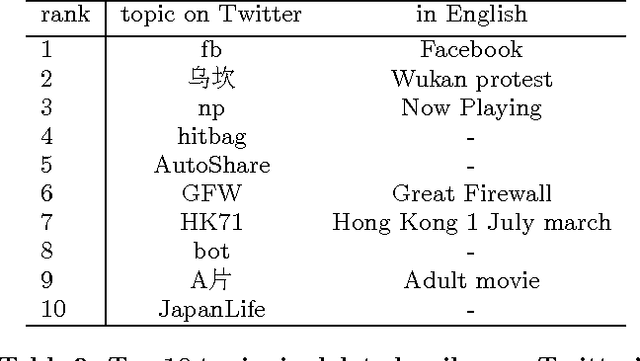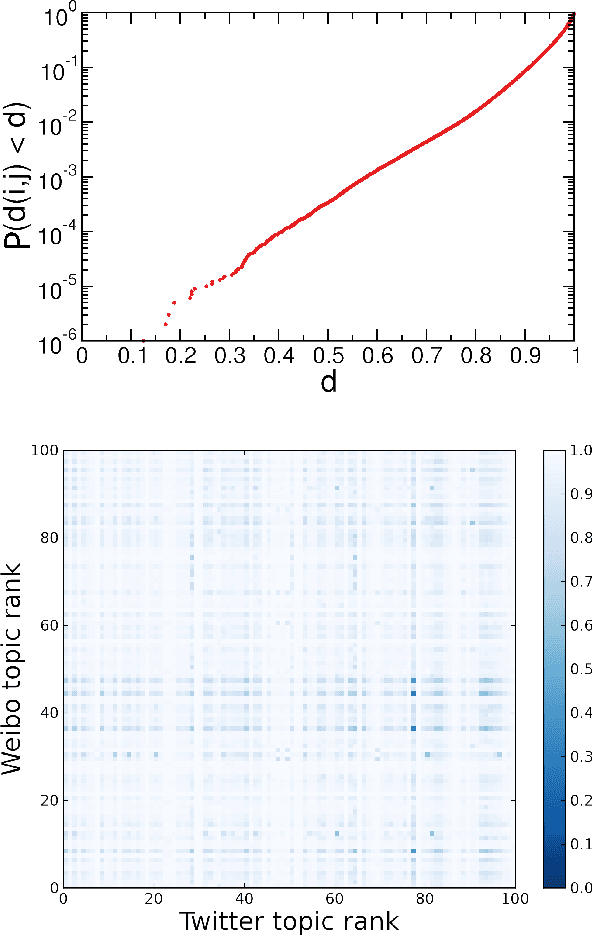Topical differences between Chinese language Twitter and Sina Weibo
Paper and Code
Dec 22, 2015



Sina Weibo, China's most popular microblogging platform, is currently used by over $500M$ users and is considered to be a proxy of Chinese social life. In this study, we contrast the discussions occurring on Sina Weibo and on Chinese language Twitter in order to observe two different strands of Chinese culture: people within China who use Sina Weibo with its government imposed restrictions and those outside that are free to speak completely anonymously. We first propose a simple ad-hoc algorithm to identify topics of Tweets and Weibo. Different from previous works on micro-message topic detection, our algorithm considers topics of the same contents but with different \#tags. Our algorithm can also detect topics for Tweets and Weibos without any \#tags. Using a large corpus of Weibo and Chinese language tweets, covering the period from January $1$ to December $31$, $2012$, we obtain a list of topics using clustered \#tags that we can then use to compare the two platforms. Surprisingly, we find that there are no common entries among the Top $100$ most popular topics. Furthermore, only $9.2\%$ of tweets correspond to the Top $1000$ topics on Sina Weibo platform, and conversely only $4.4\%$ of weibos were found to discuss the most popular Twitter topics. Our results reveal significant differences in social attention on the two platforms, with most popular topics on Sina Weibo relating to entertainment while most tweets corresponded to cultural or political contents that is practically non existent in Sina Weibo.
 Add to Chrome
Add to Chrome Add to Firefox
Add to Firefox Add to Edge
Add to Edge